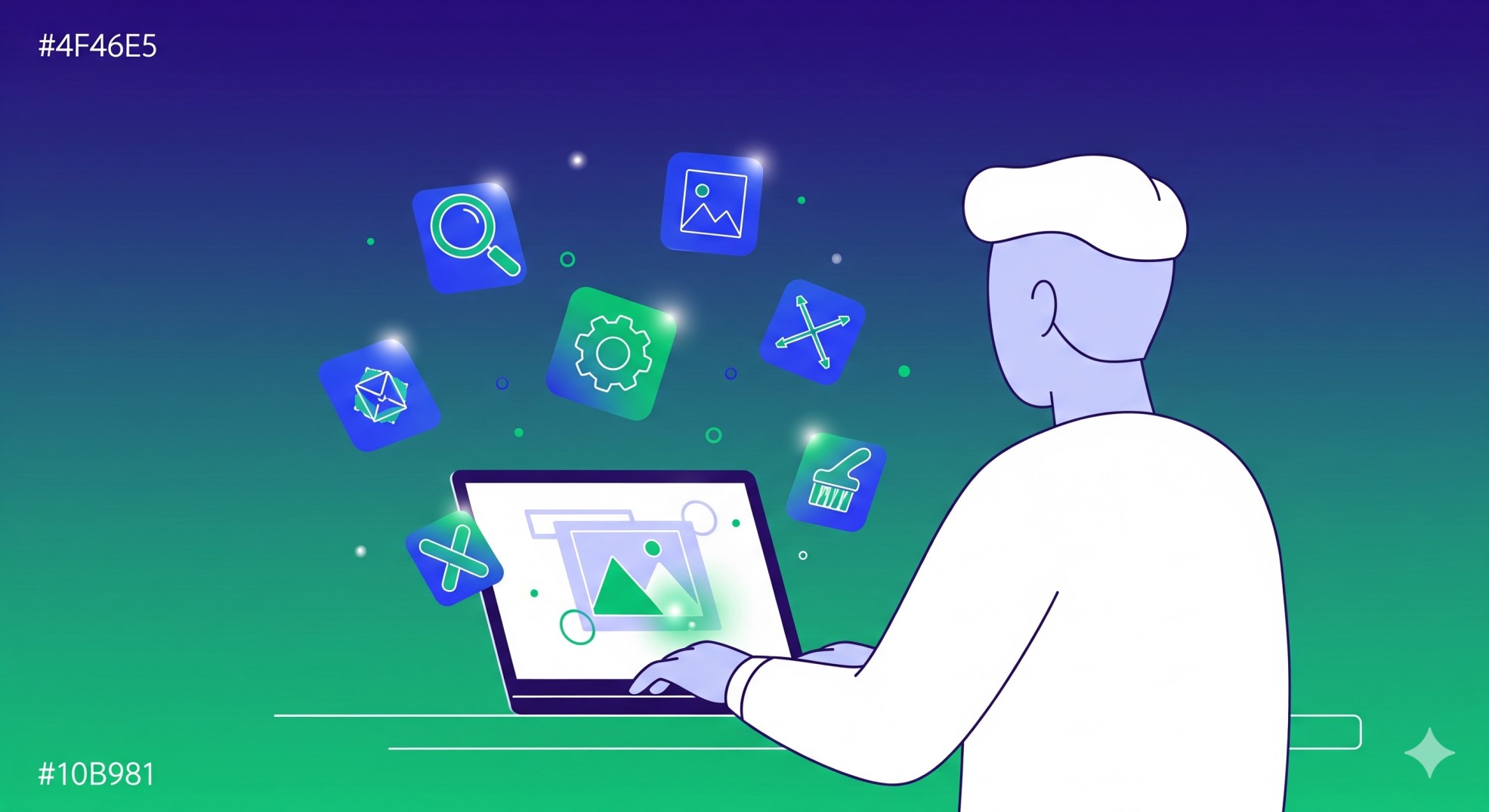You've spent hours crafting the perfect content and choosing stunning images for your website. You hit publish, and... it's slow. Painfully slow. Your beautiful, high-resolution photos are taking forever to load, frustrating visitors and potentially driving them away before they ever read a single word.
If this sounds familiar, you're not alone. Large, unoptimized images are the single biggest cause of slow websites.
But here's the good news: fixing it is easier than you think. You don't need expensive software or technical expertise. This 5-minute guide will show you how to optimize your images for lightning-fast load times, improving your user experience and boosting your SEO rankings in the process.
Why Image Optimization is Non-Negotiable
Before we get to the "how," let's quickly cover the "why." Properly optimized images directly impact:
- Page Load Speed: Smaller image files mean your pages load faster. Studies show that even a one-second delay can significantly increase your bounce rate.
- SEO Rankings: Google and other search engines use page speed as a key ranking factor. A faster site can lead to higher rankings.
- User Experience (UX): A fast, snappy website feels professional and keeps users engaged. A slow one feels broken.
- Mobile Users: For visitors on cellular data, large images can consume their data plan and load incredibly slowly.
The Three Pillars of Image Optimization
Optimizing an image isn't just one action; it's a combination of three simple steps.
1. Choose the Right File Format
Not all image formats are created equal. Choosing the right one is your first step.
- JPEG/JPG: Best for photographs and complex images with millions of colors. It uses "lossy" compression, meaning it slightly reduces quality to achieve a much smaller file size.
- PNG: Best for graphics that require a transparent background, like logos, icons, and screenshots. It uses "lossless" compression, preserving every pixel of detail, which often results in a larger file size than a JPEG.
- WebP: The modern champion. Developed by Google, WebP offers superior compression (about 30% smaller than JPEG) for both photos and graphics, and it supports transparency. It is now supported by all major browsers and is often the best choice.
2. Use the Correct Dimensions (Resize Before You Upload)
A common mistake is uploading a massive 5000-pixel wide photo straight from a camera for a space that is only 800 pixels wide on your blog. Your browser has to load the giant file first and then shrink it, wasting bandwidth and time.
The Rule: Always resize your images to the maximum dimensions they will be displayed at before you upload them.
3. Compress for Maximum Efficiency (The Secret Sauce)
Compression is the magic step. It's a process that intelligently removes unnecessary data from an image file to drastically reduce its size, often with little to no visible difference in quality. This is the single most effective way to shrink your file sizes.
Your 5-Minute Workflow with Abbas Studio's Free Image Tools
Now, let's put it all together. You can perform all three optimization steps in one place, for free, using the tools on Abbas Studio.
Here is your new workflow:
- Go to the Image Tools: Navigate to the Image Manipulation Tools section on Abbas Studio.
- Upload Your Image: Select the image you want to optimize from your computer.
- Convert & Resize: Use the Image Converter or Image Resizer tool.
- Convert: For best results, convert your image to the WebP format.
- Resize: Enter the final width you need (e.g.,
1200pixels for a full-width blog image). - Compress: Now, take your resized image and run it through the Image Optimizer/Compressor tool. This will shrink the file size dramatically.
- Download & Upload: Download your fully optimized image. It's now a fraction of its original size and ready to be uploaded to your website.
The result? A high-quality image that loads in a flash.
A Faster Website is Just a Few Clicks Away
Slow-loading images are no longer an excuse for a poor-performing website. By following this simple 5-minute workflow, you can ensure your site is fast, user-friendly, and loved by search engines.
